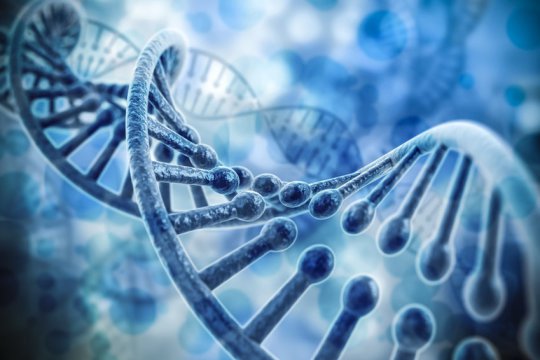



Business Inquiry
Global:
Email:marketing@medicilon.com
+1(781)535-1428(U.S.)
0044 7790 816 954 (Europe)
China:
Email: marketing@medicilon.com.cn
Tel: +86 (21) 5859-1500



Medical forms sometimes ask patients to mark off a box for race or ethnicity, the implication being that health outcomes depend, to some degree, on genetic and environmental factors that vary from group to group. Yet any one box, any broad category, would seem a crude proxy for the complex combination of factors that may influence an individual patient’s health prospects.

As it happens, not all marks are as limiting as those we may enter on a medical intake form. There are also epigenetic marks, such as the methylated sites on DNA. Significantly, these marks can be either inherited or altered by life experience. And so they may be useful as an alternative to crude categorization. Specifically, they could help tease apart how much of health differences between populations are genetic and how much are environmental.
Epigenetic modification plays a major role in the expression of genetic information. The DNA methyltransferase is an attractive target for tumor chemotherapy. WK-23 displays a good inhibitory effect on human DNMT1 with an IC50 value of 5.0 µM. In vivo pharmacokinetic properties of WK-22, WK-23, WK-27, and DC_517 were performed by Medicilon.
An epigenetic view could augment a genetic view of health and disease, suggest researchers based at the University of California, San Francisco (UCSF). A UCSF-led study has identified signatures of ethnicity in the genome that appear to reflect an ethnic group’s shared culture and environment, rather than their common genetic ancestry.
DNA methylation is a process that controls how genes are expressed, without changing the genetic code itself. Methylation can change the activity of a DNA segment without changing the sequence.
Details appeared January 3 in the journal eLife, in an article entitled, “Differential Methylation between Ethnic Sub-Groups Reflects the Effect of Genetic Ancestry and Environmental Exposures.” The article describes how the UCSF scientists studied DNA methylation patterns in a group of diverse Latino children. The scientists typed over 450,000 CpG (cytosine–phosphate–guanine) sites in whole blood of 573 individuals who also had high-density genotype data.
“We found that both self-identified ethnicity and genetically determined ancestry were each significantly associated with methylation levels at 916 and 194 CpGs, respectively, and that shared genomic ancestry accounted for a median of 75.7% of the variance in methylation associated with ethnicity,” wrote the article’s authors. “There was a significant enrichment…of ethnicity-associated sites amongst loci previously associated environmental exposures, particularly maternal smoking during pregnancy.”
Roughly one-quarter of the epigenetic difference between the two ethnic subgroups could not be accounted for by differences in the children’s genetic ancestry. This difference, the authors suggested, could reflect a biological stamp made by the different experiences, practices, and environmental exposures distinct to the two ethnic subgroups.
“These data suggest that the interplay between race and ethnicity as social constructs and genetic ancestry as a biological construct is more complex than we had realized,” said Noah Zaitlen, Ph.D., a UCSF assistant professor of medicine and co-senior author on the new study. “In a medical context both elements may provide valuable information.”
“This is a big advancement of our understanding of race and ethnicity,” added Esteban Burchard, M.D., MPH, the study’s other co-senior author and a professor of bioengineering and therapeutic sciences and of medicine at UCSF. “There’s this whole debate about whether race is fundamentally genetic or is just a social construct. To our knowledge this is the first time anyone has attempted to quantify the molecular signature of the nongenetic components of race and ethnicity. It demonstrates in a whole new way that race combines both genetics and environment.”
Researchers and clinicians have known for many years that different racial and ethnic populations get diseases at different rates, respond differently to medications, and show very different results on standard clinical tests. It’s tempting to assume that such health disparities between races and ethnicities all stem from inherited genetic differences, but that’s not necessarily the case. Different racial and ethnic groups also eat different diets, live in neighborhoods with more or less pollution, experience different levels of poverty, and are more or less likely to smoke tobacco, all of which could also impact their health outcomes.
“Using epigenetics as a biomarker could give you a lot of information about environmental exposures within particular populations that’s not captured by genetics,” noted Dr. Zaitlen. “Our next step will be to understand how specific epigenetic signatures are linked to particular environmental exposures, and use those signals to understand patient risk.”
Scientists and clinicians have increasingly tried to move away from simplistic racial and ethnic categories in disease research, the authors say, and—with the rise of precision medicine—in clinical diagnosis and treatment as well. Studies by the Burchard group and others have found that using genetic ancestry rather than ethnic self-identification significantly improves diagnostic accuracy for certain diseases.
But the new data showing that a large fraction of epigenetic signatures of ethnicity reflect something other than ancestry suggests that abandoning the idea of race and ethnicity altogether could sacrifice a lot of valuable information about the drivers of differences in health and disease between different communities.
“Like a standard family history, ethnicity is association with disease for both genetic and environmental reasons,” explained Dr. Zaitlen. “If your dad or mom had a heart attack, that tells doctors a lot about your risk for a heart attack. Part of that is genetic, but part of it is that your lifestyle is influenced heavily by your parents’ lifestyle. Your ethnic group is like a much bigger family—it’s partly a matter of genetics, but it also reflects the environment of your broader community.”
 Relevant
news
Relevant
news